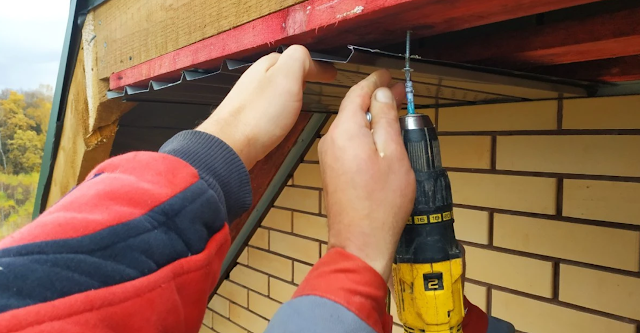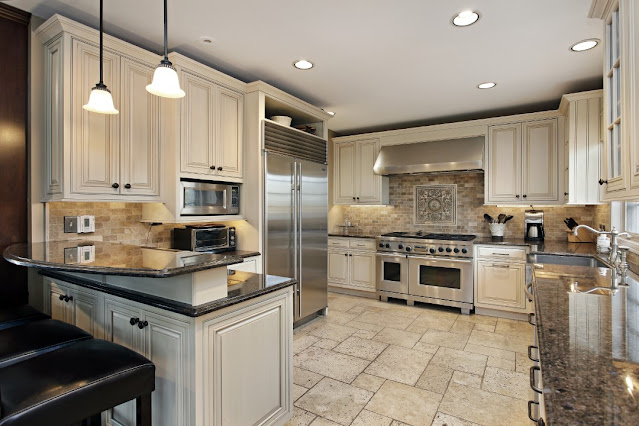Dealing with Damaged Trim? Here's Your Repair Guide in Auburn
The trim in your home, whether it's crown molding, baseboards, window casings, or doorways, plays a vital role. It adds a touch of elegance, frames openings, and protects your walls. However, over time, due to wear and tear, moisture, or accidents, your trim can become damaged. This not only detracts from your home's aesthetics but can also lead to problems with drafts and energy efficiency.
If you're facing damaged trim in your Auburn home, don't despair! This guide will equip you with the knowledge to assess the damage, explore repair options, and even walk you through some DIY fixes.
Identifying the Damage:
The first step is to identify the extent and type of damage to your trim. Here's a breakdown of some common issues:
- Minor Scratches & Dings: These are usually caused by everyday bumps or furniture. They might be purely aesthetic concerns.
- Cracks & Splinters: These can be caused by aging wood, shrinkage, or forceful impact. Left unattended, they can worsen.
- Warping & Rot: This is often due to moisture exposure. Warped trim can look unsightly and potentially lead to drafts. Decayed or rotten trim needs immediate attention.
- Gaps & Holes: These might appear around windows, doors, or where trim pieces meet. Gaps can occur due to settling of the house or improper installation and can cause drafts.
Assessing the Repair Needs:
Once you've identified the damage, consider the severity. Here's how to decide on the best course of action:
- Minor Scratches & Dings: You might be able to tackle these yourself with some wood filler and paint.
- Cracks & Splinters: Depending on the size and depth, you can attempt Trim repair services
with wood glue and sanding. For larger cracks, professional help might be needed. - Warping & Rot: In most cases of warping or rot, especially if it's extensive, seeking professional repair or replacement is advisable. Patching or attempting DIY fixes could lead to further issues down the line.
- Gaps & Holes: Depending on the size and location of the gap, you might be able to seal them with caulk or filler. For larger gaps or those around windows and doors, consulting a professional is recommended.
DIY Trim Repair Solutions:
For minor damage like scratches, dings, and small cracks, here's a basic DIY Repair repair guide:
- Gather your supplies: You'll need painter's tape, wood filler appropriate for the trim material (usually wood or latex), sandpaper (different grits – rough and fine), a putty knife, a damp cloth, and paint that matches your trim.
- Preparation is key: Clean the damaged area with a damp cloth to remove dust and debris. Use painter's tape to mask off the surrounding area to avoid paint getting on your walls.
- Apply wood filler: For scratches and dings, use a putty knife to fill the gaps with wood filler. For cracks, gently press the filler into the crack, ensuring it fills completely.
- Smoothing it out: Once the filler dries (refer to product instructions for drying time), use sandpaper to smooth the area. Start with rougher grit sandpaper to remove excess filler and then progress to finer grits for a smooth finish. Wipe away any dust with a damp cloth.
- Painting (optional): If the repair area is noticeable, apply a coat of paint that matches your trim. Use a small brush for precise application. Allow the paint to dry completely.
Important Considerations for Trim Repair Services:
- Match the trim material: Always use wood filler that's compatible with your trim material (wood or MDF).
- Start small: If you're unsure about your DIY Repair skills, start with a small, inconspicuous area to practice before tackling more visible damage.
- Safety first: Wear a dust mask while sanding to avoid inhaling dust particles.
- When in doubt, call a professional: For extensive damage, warped trim, or rot, don't hesitate to seek professional help. A qualified contractor can assess the situation, recommend the best course of action, and ensure a proper repair that will last.
Benefits of Hiring a Professional DIY Repair:
While Trim Repair Services can be suitable for minor issues, there are several advantages to hiring a professional for your Auburn home:
- Expertise & Experience: Professional contractors have the knowledge and experience to diagnose the cause of the damage and recommend the most effective repair solution.
- The Right Tools & Materials: They have access to specialized tools and high-quality materials that ensure a long-lasting repair.
- Safety & Efficiency: They can handle repairs safely and efficiently, minimizing disruption to your home
Conclusion:
Damaged trim doesn't have to be a major headache. By following the tips in this guide, you can assess the damage, explore Trim Repair Services in Auburn options for minor issues, and find qualified professionals in Auburn to handle more extensive repairs. Remember, regular maintenance is key to keeping your trim looking beautiful and ensuring it protects your home for years to come.



Comments
Post a Comment